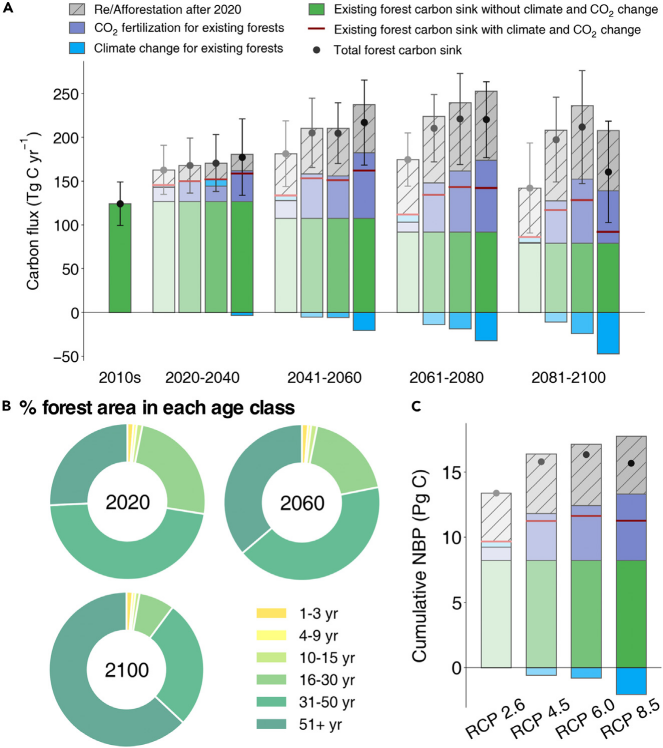Forest carbon sinks, a key component of the global land sink, are vital in efforts to mitigate climate change. In recent decades, large-scale ecological conservation and restorations projects have been implemented in China, forming a complex forest age structure while increasing land carbon sinks. The present forests in China are mainly composed of young and middle-aged, featuring high carbon sequestration capacity. However, with forest aging and under the joint impacts of multiple factors such as future climate change and land use change, the impacts of forest age structure on China’s land carbon sink are still uncertain.
To address the above problem, Associate Professor Li Wei’s Research Group of the Department of Earth System Science (DESS), Tsinghua University, in collaboration with numerous domestic and international research institutions, has undertaken a comprehensive endeavor to reconstruct the historical land use change map of China, based on remote sensing and statistical data. Furthermore, they have employed a global vegetation model to simulate the temporal and spatial dynamics of carbon sinks in China’s terrestrial ecosystems. This model incorporates the dynamic forest age module devised by Professor Yue Chao of Northwest A&F University, which proficiently simulates the impact of forest aging on forest carbon sequestration capacity.
The research results demonstrate that China’s terrestrial carbon sink was estimated as 198 ± 54 TgC yr-1 from 2010 to 2019, among which forest carbon sinks accounted for approximately 124±25 Tg C yr-1, mainly contributed by middle-aged forests. After fully considering China’s future afforestation goals and the impacts of different climate change scenarios, the simulation results show that China’s forest carbon sinks will drop from 181~217 Tg C yr-1 in 2041-2060 to 142~212 Tg C yr-1 in 2081-2100. The current forest ecosystem serves as the primary reservoir for future forest carbon sequestration; however, owing to forest aging and the gradual increase in atmospheric CO2 concentrations, the existing forest carbon sinks are projected to decline annually by approximately 0.35-1.1 Tg C yr⁻¹ in the forthcoming years. Future afforestation and reforestation endeavors can augment these carbon sinks by expanding forest cover and rejuvenating forest age structure. This study underscores the significance of considering the dynamic shifts in forest age for assessing terrestrial carbon sequestration capacities and highlights that delaying forest aging through scientific forest management practices represents an effective strategy for enhancing forest carbon sequestration.

Fig. 1 Composition of future forest carbon sink and forest age in China
The above achievements have been recently published in One Earth as a paper titled “Forest aging limits future carbon sink in China”. Leng Yi, a doctoral student in the DESS, Tsinghua University, is the first author of the paper, and Associate Professor Li Wei is the corresponding author. Collaborators include Professor Philippe Ciais and Dr. Yao Yitong from Laboratoire des Sciences du Climate et de l’Environnement (LSCE) in France, Professor Yue Chao from Northwest A&F University, Researcher Chang Jinfeng from Zhejiang University, Researcher Zhang Yuan from the Institute of Tibetan Plateau Research, Chinese Academy of Sciences, Researchers Wang Xuhui and Peng Shushi, and Dr. Xi Yi from Peking University, as well as Sun Minxuan, Dr. Li Zhao, doctoral student Zhu Lei, and doctoral student Zhou Jiaxin from the DESS, Tsinghua University. This research was supported by the National Natural Science Foundation of China, among others.
Full-text link: https://doi.org/10.1016/j.oneear.2024.04.011
Written by Leng Yi